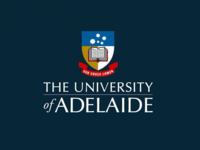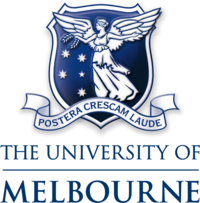
How do I become a curator?
Bachelor of Arts (Fine Arts)
- There are no mandated entry requirements.


Certificate IV in Library and Information Services
- There are no mandated entry requirements.




Diploma of Library and Information Services
- There are no mandated entry requirements.







Advanced Diploma of Visual Arts
- Evidence of relevant skills, knowledge and employment experience





Bachelor of Arts (Film Studies)
- There are no mandated entry requirements.



Diploma of Arts
- There are no mandated entry requirements.








Related occupations
Library Assistant
A Library Assistant processes loans, manages returns, aids customers, maintains cataloguing, and assists with displays and library events.
Museum Assistant
A Museum Assistant greets visitors, answers questions, conducts tours, maintains displays, and supports artefact handling and multimedia prep.
Librarian
A Librarian manages library systems, assists patrons with loans, organises events, and maintains cataloguing, requiring strong customer service skills.
Archivist
An Archivist assesses and preserves historical documents, maintaining cataloguing systems and ensuring proper retrieval and preservation.
Museum Curator
A Museum Curator oversees exhibitions and collections, ensuring displays are informative, well-maintained, and aligned with their research expertise.
Heritage Consultant
A Heritage Consultant advises on preserving heritage assets, offering insights on historical value and conservation for restoration projects.
Historian
A Historian researches and analyses past events, documents, and artefacts, sharing findings through reports, presentations, and teamwork.
Art Historian
Art Historians research art's historical development, verify artwork authenticity, preserve artifacts, and contribute to cultural understanding.
Conservator
Conservators preserve artworks and historical items in galleries and museums by assessing, documenting, and carrying out preservation work.
Heritage Specialist
Heritage Specialists advise organisations on protecting heritage sites, ensuring compliance with legislation while developing operational policies.
Art Curator
Art Curators recommend and acquire artworks for galleries and museums, organise exhibitions, and manage collections and records.
Gallery Manager
Gallery Managers oversee the operations of art galleries and museums, handling administration, marketing, and exhibition events while ensuring art sales and recruitment align with the gallery's goals.
Senior Curator
Senior Curators lead research and development of exhibitions at major galleries, managing teams while representing the gallery internationally.
Museum Director
A Museum Director manages operations, ensuring collections are preserved and exhibited, while leading fundraising and community engagement efforts.
Historical Researcher
A Historical Researcher investigates past events and societies, producing detailed reports while analysing documents and presenting findings.
Museum Administrator
A Museum Administrator manages daily operations, budgets, staff, exhibitions, collections, and public engagement to enhance visitor experiences.
Cultural Advisor
A Cultural Advisor supports inclusive policies, cultural training, and communication to foster respectful engagement with diverse communities.
Festival Producer
Festival Producers organise and manage all aspects of festivals, coordinating logistics, vendors, and marketing to deliver seamless, engaging events.
Theatre Director
Theatre Directors conceive and implement artistic visions for productions, directing actors and coordinating all elements to bring scripts to life.
Gallery Curator
A Gallery Curator organises art exhibitions, selecting and displaying artworks to educate and engage the public while liaising with artists and collectors.
Common questions
How much does a Curator earn?
In Australia, a full time Curator generally earns $1,700 per week ($88,400 annual salary) before tax. This is a median figure for full-time employees and should be considered a guide only. As you gain more experience you can expect a potentially higher salary than people who are new to the industry.
What are the job opportunities for a Curator?
Employment numbers in this industry have remained stable in recent years. There are currently 1,100 people working as a Curator in Australia and there were a similar number in this role five years ago. Curators may find work across all regions of Australia, particularly in larger towns and cities
Source: Australian Government Labour Market Insights
How do I become a Curator?
your skills with records management, customer service and information systems. You could also consider a Diploma of Library and Information Services or an Advanced Diploma of Visual Arts.
Further reading


What can you do with a Certificate III in Pathology Collection?
4th November 2021)

